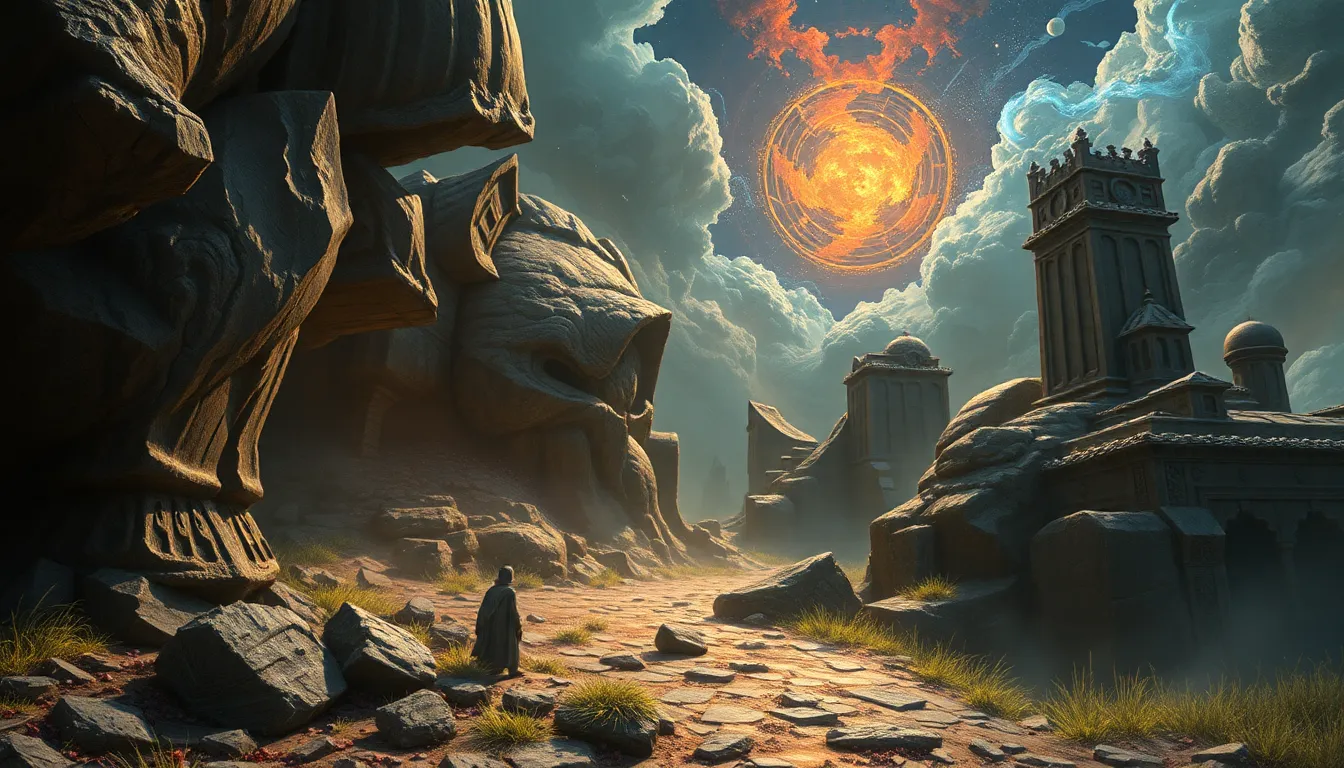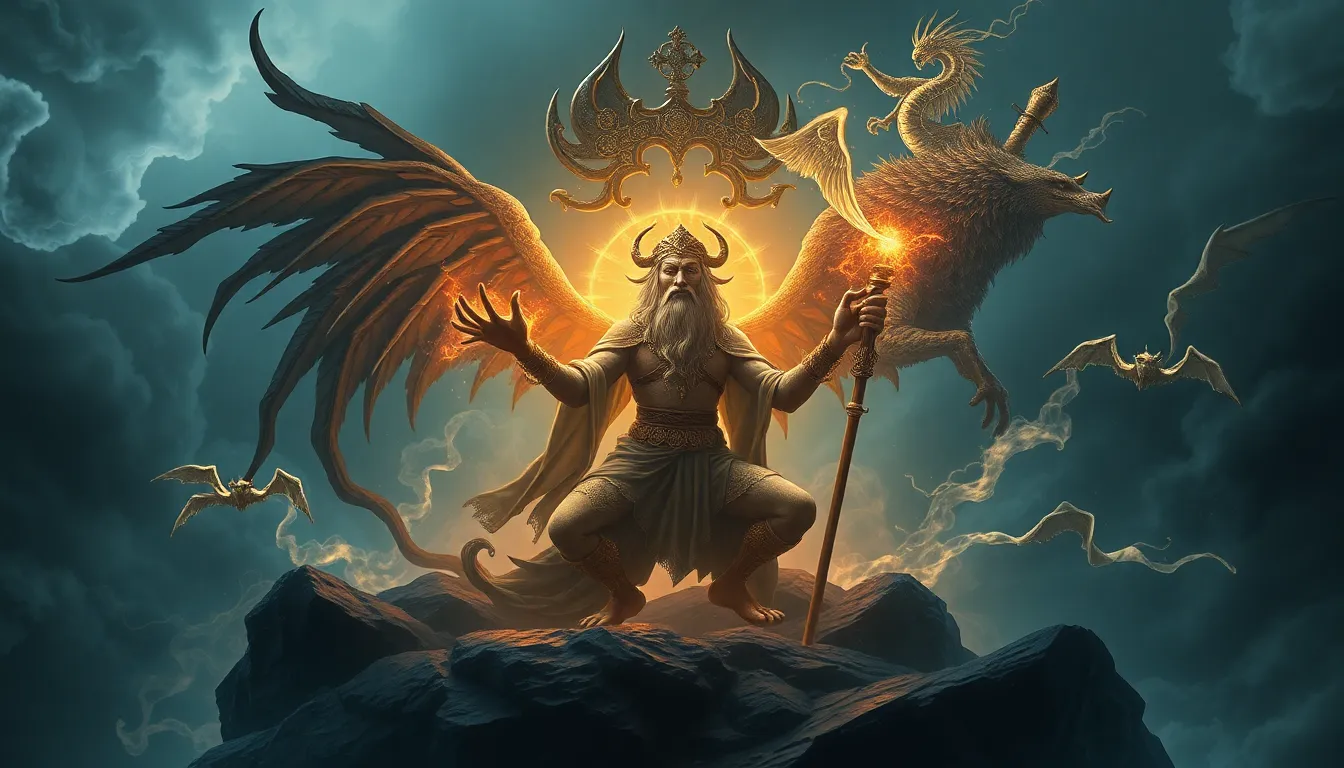Moral Myths and the Nature of Belief: Lessons from Legends
I. Introduction
Moral myths are narratives that embody collective ethical beliefs and values, often serving as guiding principles for behavior within a culture. They are not merely fictional tales; instead, they represent the moral fabric of societies, offering insights into what is deemed right and wrong. Understanding these myths is crucial, as belief systems shape moral values and influence individual and collective actions.
This article explores the intricate relationship between legends and morality, examining how these narratives function as moral compasses that guide human behavior across different cultures and epochs.
II. The Role of Myths in Human Culture
Myths have played an essential role in human culture throughout history. They serve not only as entertainment but also as vehicles of moral education.
- A. Historical significance of myths across cultures: Myths have been integral to the development of cultural identities, from ancient Greek mythology to Indigenous stories. They provide a framework for understanding the world and one’s place in it.
- B. The psychological impact of storytelling on moral development: Storytelling fosters empathy and emotional intelligence, allowing individuals to relate to the experiences of others. This connection is vital for moral reasoning and ethical behavior.
- C. Case studies of prominent moral myths from various cultures: Examples include the parables of Aesop, Native American folklore, and the fables of Panchatantra, each offering unique moral lessons relevant to their respective cultures.
III. Analyzing Moral Lessons in Legends
Legends often encapsulate profound moral lessons, reflecting societal values and ethical dilemmas.
- A. Common themes in moral legends: Many legends explore universal themes such as justice, sacrifice, and truth. These themes resonate across cultures, highlighting shared human experiences.
- B. How legends convey ethical dilemmas and resolutions: Legends often present characters facing moral quandaries, which serve to illustrate the consequences of various choices and the importance of ethical decision-making.
- C. The lasting impact of these lessons on societal norms: The morals derived from legends have a lasting effect, shaping laws, customs, and social expectations.
IV. The Nature of Belief: Understanding Human Psychology
Belief formation is a complex process influenced by cognitive and emotional factors.
- A. Cognitive processes involved in belief formation: Individuals assimilate information and experiences, leading to the establishment of beliefs that guide behavior and moral reasoning.
- B. The role of emotions in shaping moral beliefs: Emotions play a crucial role in moral judgment, as feelings of empathy, guilt, and pride can influence ethical decisions.
- C. Influence of cultural and social factors on belief systems: Cultural context significantly shapes beliefs, as individuals are often influenced by the values and norms prevalent in their society.
V. Moral Myths: Bridging the Gap Between Belief and Action
Moral myths have the power to inspire behaviors that align with ethical principles.
- A. How moral myths inspire real-world behavior: By illustrating virtuous conduct and the consequences of immoral actions, myths encourage people to aspire to similar ideals.
- B. The concept of moral exemplars in legends: Characters in myths often serve as moral exemplars, demonstrating the virtues of integrity, courage, and compassion.
- C. The effectiveness of myths in promoting ethical conduct: Myths can be more persuasive than abstract ethical theories, as they provide relatable narratives and characters.
VI. The Evolution of Moral Myths in Modern Society
The landscape of moral myths is continually evolving, adapting to contemporary societal contexts.
- A. Transformation of traditional legends in contemporary contexts: Many traditional legends have been reinterpreted to reflect modern values and issues, making them relevant for today’s audiences.
- B. The rise of new moral narratives in media and literature: New forms of storytelling, including films, books, and digital media, have emerged, offering fresh moral dilemmas and solutions.
- C. Impact of technology on the dissemination of moral myths: Technology facilitates the rapid spread of moral narratives, allowing diverse voices and perspectives to contribute to the ongoing evolution of myths.
VII. Critiques of Moral Myths
While moral myths can be beneficial, they also face criticism regarding their potential drawbacks.
- A. The potential dangers of oversimplified moral narratives: Simplistic portrayals of good and evil can lead to black-and-white thinking, limiting nuanced moral understanding.
- B. How myths can perpetuate biases and stereotypes: Some myths may reinforce negative stereotypes or cultural biases, leading to harmful societal attitudes.
- C. The challenge of reconciling conflicting moral beliefs within myths: Different myths may present conflicting moral messages, creating confusion and moral ambiguity.
VIII. Lessons from Legends: Practical Applications in Education and Ethics
Moral myths can be powerful tools in education and community building.
- A. Utilizing moral myths in teaching ethics and critical thinking: Educators can use stories to engage students in discussions about ethics, helping them develop critical thinking skills.
- B. Incorporating legends into community-building initiatives: Shared stories can foster a sense of community and shared values, promoting social cohesion.
- C. Strategies for fostering moral resilience through storytelling: Storytelling can help individuals navigate moral challenges, reinforcing the importance of ethical behavior.
IX. Future Directions: The Role of Myths in Shaping New Beliefs
As society evolves, so too does the role of myths in shaping new beliefs.
- A. Potential for new myths in addressing contemporary moral crises: New narratives can emerge to address pressing moral issues, such as environmental ethics and social justice.
- B. The role of diverse voices in creating inclusive moral narratives: It is essential to include a variety of perspectives in moral storytelling to reflect the complexities of modern society.
- C. Emphasizing critical engagement with moral myths in a pluralistic society: Encouraging critical thinking about myths allows individuals to navigate the diverse moral landscapes they encounter.
X. Conclusion
Moral myths serve as pivotal narratives that shape beliefs and influence ethical behavior. By examining legends, we gain insights into the collective moral compass of societies and the psychological processes that underpin belief formation. While moral myths are not without their critiques, their potential to inspire and educate remains significant. As we move forward, recognizing the evolving nature of these narratives and embracing diverse voices will be essential in fostering a more inclusive and ethical society.



